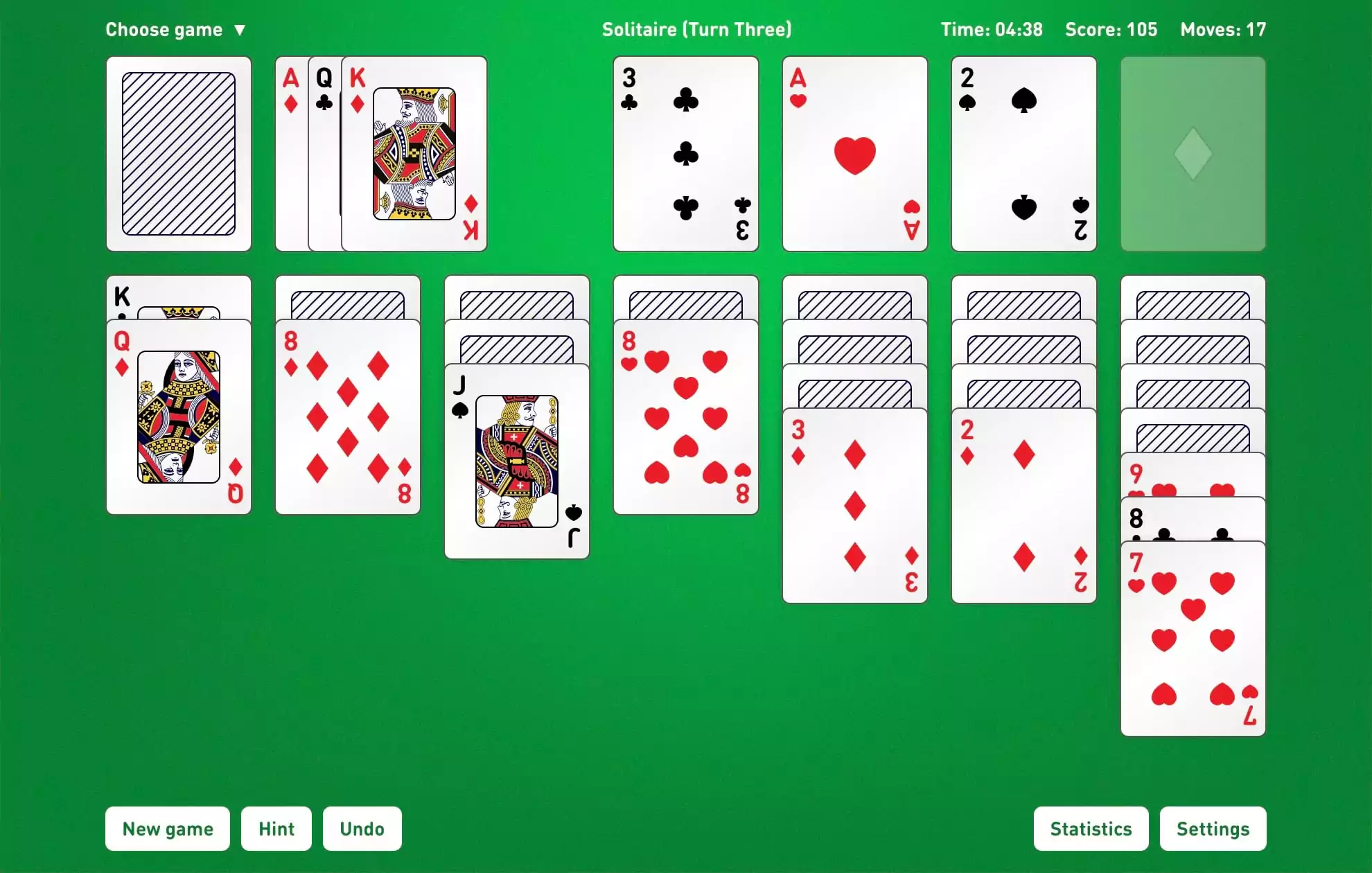Solitaire still attracts millions of players on a monthly basis, from its classic iteration to spin-offs like Tableau. While they each have foundation piles and a stockpile, some of the rules vary pretty significantly.
Whether you’ve always wanted to know more about the classic card game or are looking for a new variation to shake up your playstyle, there are plenty of differences between how various types of Solitaire work.
Klondike
Klondike is, without a doubt, the most popular type of Solitaire. That’s because, if you think of classic Solitaire, you’re probably actually thinking of Klondike. It’s like how all facial tissue is fondly dubbed “Kleenex.” Klondike is especially popular because top card sites like Solitaired offer it as a free online game.
It’s typically also part of the Microsoft Solitaire Collection, though this game suite doesn’t offer as many customization options or features as Solitaire. Plus, you won’t need an ad blocker as Solitaired’s privacy policy entails that they don’t bombard players with constant advertising.

You should be fairly familiar with the rules of Klondike: Your goal is to build your foundation piles from a single stock pile. You can even make it more challenging by switching from only flipping one card face up to flipping three. This can make the game take a long time since it will be harder to get each card face into your foundation piles.
Spider
There’s a key difference between classic Solitaire and Spider Solitaire: Spider uses two decks instead of one. That means it’ll be harder to deplete the stock pile as well as build up foundation piles.
There are ten different piles instead of seven and one stock pile. Plus, instead of drawing one card from the stock, Spider requires you to draw one card to place in each of the ten piles. While this may seem like it’s beneficial (more cards, means more options, right?) it can also prolong the length of the game since you’ll likely end up playing on top of your existing sequences.
If you’re looking for something that’s more of a challenge than your average game of Klondike, you’ll probably want to try out Spider. It can be easy enough to dig into but incredibly complicated to master. However, that’s what keeps drawing users back to it over and over again.
Pyramid
Pyramid Solitaire goes back down to one deck from Spider’s two. However, this doesn’t mean the challenge goes out of the window. Of course, the goal is still to play all 52 cards in the deck and get rid of the pyramid. There are some key quirks, though. Your objective is to remove pairs of cards that add up to 13. Any higher or lower is a no-go. It’s also unique in that it doesn’t use traditional foundation piles.
You’ll start by dealing one card face up, followed by two on top of it, followed by three on top of those, and so on. Once you have a final row comprised of seven cards, you’re ready to play. You should’ve dealt 28 cards to your tableau in total. Then, from your draw pile, you’ll begin removing pairs from the pyramid.
However, you can only work with cards that are completely uncovered. If, for example, you have an Ace covering a Queen, you can’t pick up the Ace to combine the two. It adds a level of strategy to the game and ensures your pairings really have weight.
Of course, there are dozens of other variants of Solitaire, and webmasters have learned how to embed card games online to offer these games to their audience. However, for some fun, popular, and challenging games, you can’t go wrong with a classic or Spider and Pyramid.

